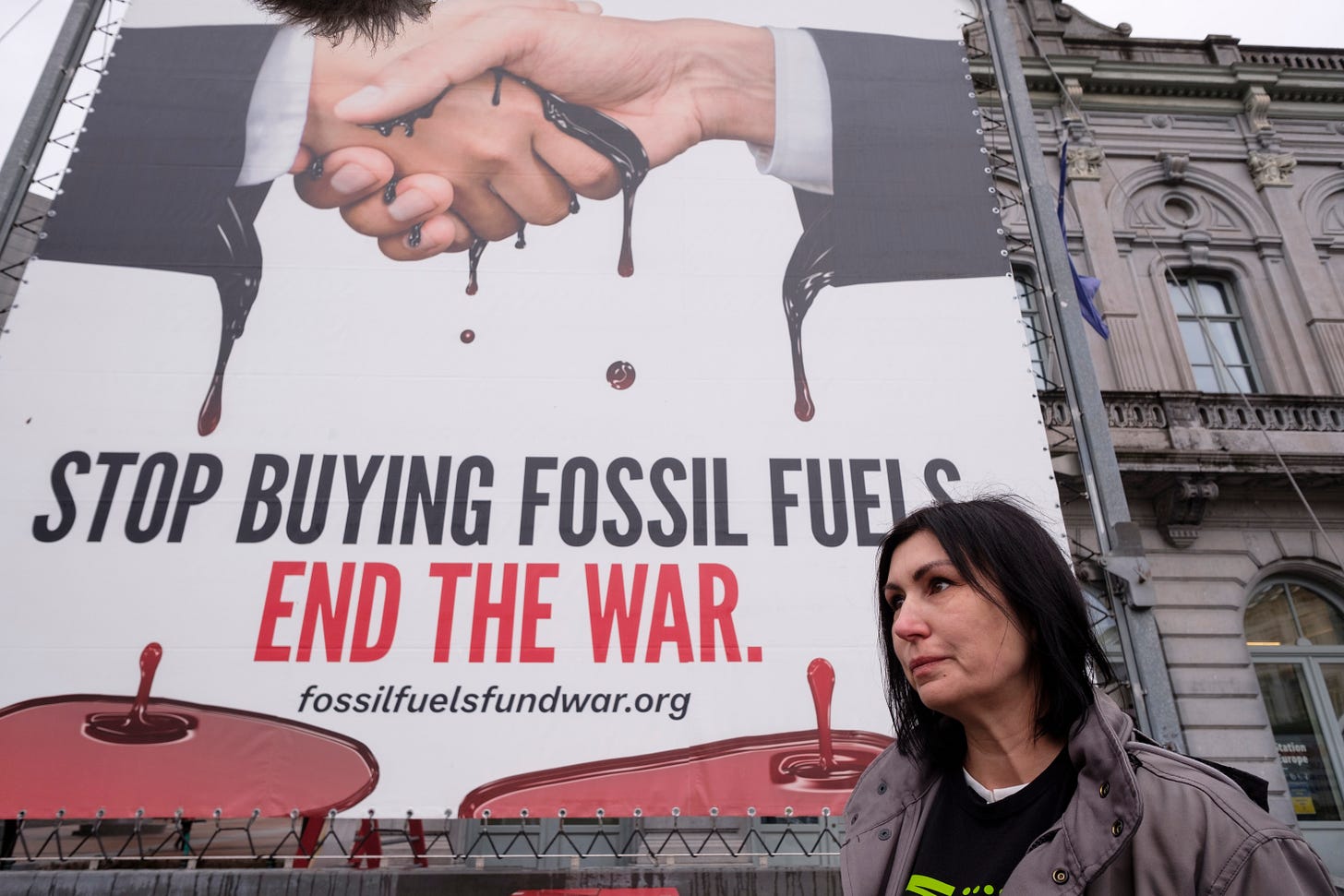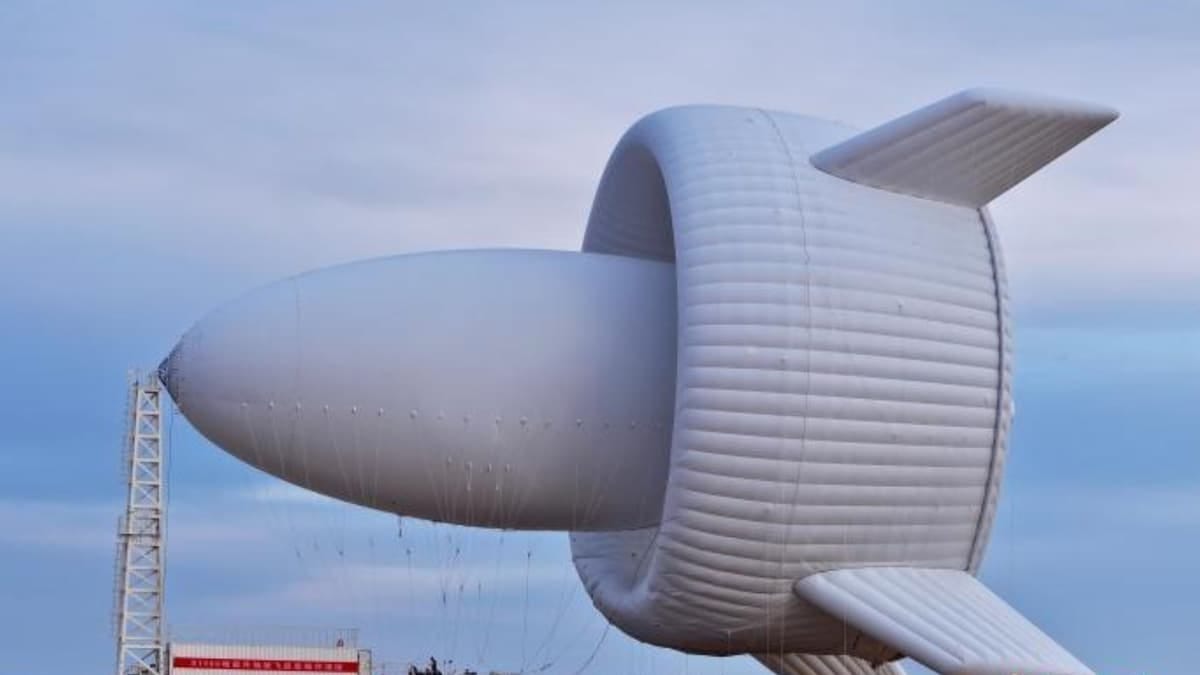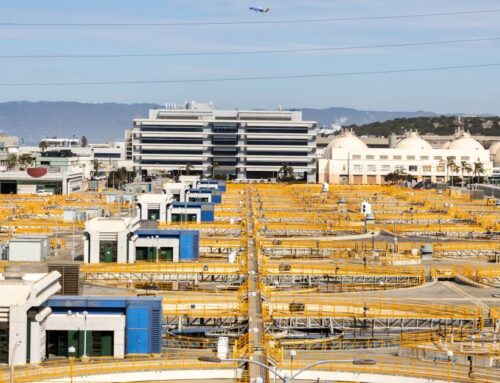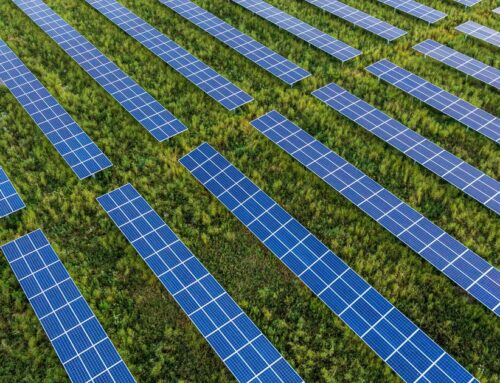It’s hard to drone a solar panel
October 4, 2025
The war in Ukraine may be adding resilience to the list of clean energy’s virtues
As I write this, the Orsknefteorgsintez refinery in Orsk, Russia is ablaze. It sits 1,400 kilometers from the border with Ukraine—in fact, along the border with Kazakhstan. The refinery has a capacity of 6.6 million tons of oil yearly, and among other things it’s one of two refineries capable of producing the jet fuel used by the country’s strategic bombers.
The best reason for nations to switch to power from the sun and wind is that it will reduce, by some degree, the severity of the climate crisis (and save millions of lives lost each year to pollution). The second best reason is that it’s cheaper than fossil fuel, and any nation who doesn’t shift will be stuck with an economy running on expensive energy. But it seems to me—not a military analyst, but a fairly good tea-leaves reader—that the war in Ukraine may be adding a third to the list: its comparative invulnerability to attack.
As the world has begun to figure out, something important has happened amidst the carnage of Russia’s immoral invasion: warfare has changed forever, with the small drone quickly replacing much of the military hardware we grew accustomed to in the 20th century. Drones have been ubiquitous along the front lines, where the no-man’s zone between the armies is lethally patrolled by squadrons of drones able to take out tanks, troop transports, and pretty much anything else—that explains much of the stasis of the last two years; the competing forces are largely pinned down.
The Russians, of course, have also been using drones to attack civilian assets—every night a new sortie, mixed in with missiles, seems to take out kindergartens, hospitals, and old folks homes. An early target was Ukraine’s energy sources, in an effort to freeze the fight out of the nation. (Currently the Russians seem to be playing dangerous games with the offline nuclear power plants not far from the front lines). But as we head into yet another war of winter, Ukraine hangs on—and more than hangs on.
Over the course of the war, by sheer necessity, Ukraine has developed a formidable drone industry, and increasingly it is using them against a singular set of targets: the oil refining and transport infrastructure spread out across its sprawling foe. Russia has formidable air defenses, of course—Ukraine couldn’t fly a bomber across 1,400 kilometers of the country’s airspace to bomb a refinery. But the small and comparatively slow drones have proved equal to the task. As the FT reported last week,
Sixteen of Russia’s 38 refineries have been hit since the start of August, some of them multiple times, including one of Russia’s largest fuel-processing facilities, the 340,000 barrel-a-day plant at Ryazan, close to Moscow.
The strikes have disrupted more than 1 million barrels a day of Russia’s refining capacity, according to Energy Aspects, a research group. Diesel exports, if they maintain the current rate, will fall to the lowest monthly total in September since 2020, according to both OilX and Vortexa, which track cargoes.
“It seems to be the most effective campaign that Ukraine has carried out so far,” said Benedict George, head of European petroleum products pricing at Argus, which reports commodity prices.
It’s not just export cargoes that are affected. Russia itself—one of the world’s biggest oil and gas producers—has begun to run short of gasoline for its own motorists. According to Victoria Veselova, in Crimea, for instance, drivers are
experiencing an unprecedented fuel crisis. Local gas stations have run out of gasoline. Local Russian authorities admit that the reason for this is a decline in oil refining volumes in Russia. This was caused by regular drone attacks by the Ukrainian Armed Forces on Russian oil refineries. Crimea.Realities explains how Crimeans are coping without fuel and what to expect.
The first fuel problems in Crimea appeared in mid-August. The popular AI-95 gasoline disappeared from local gas stations. The price of gasoline of all grades also rose sharply. Many Crimean drivers switched to cheaper AI-92 gasoline, damaging their cars.
The Russian head of Crimea, Sergey Aksyonov, promised that the situation would improve by the end of September, when the rush associated with the holiday season had subsided. However, by that time, the problem had not only persisted but had worsened: in September, fuel completely disappeared from Crimean gas stations.
It’s also affecting the mobility of the Russian military, according to reporting in the Kyiv Independent.
Ukraine’s Commander-in-Chief Oleksandr Syrskyi said on Sept. 25 that Kyiv’s strikes on Russia’s oil sector have severely disrupted fuel supplies and logistics for Moscow’s armed forces.
“This is a fuel crisis in Russia, which directly affects logistics and the supply of its army,” Syrskyi said at a meeting with journalists attended by the Kyiv Independent.
The general lesson to be drawn from this, it seems to me, is that centralized and complex energy facilities are now sitting ducks for drone attack, and that that will certainly alter military calculations going forward. A refinery, for instance, is one of the most complicated machines humanity has ever constructed, often covering hundreds of acres. It’s filled with highly complex equipment and highly flammable hydrocarbons; hit one corner with a drone and the flames and the damage are likely to spread quickly. Not far behind—as Ukraine has learned to its sadness—are coal and gas-fired power plants—expensive infrastructure that can take months or years to rebuild as your citizens shiver.
By contrast, solar farms and wind turbines are scattered, which makes them harder to hit, and relatively simple to fix. Silicon doesn’t explode when it’s hit: a drone may take out some panels, but they are easy to switch out for new ones. And individual rooftop installations are too small to be systematically attacked. That’s why there’s been a huge boom in small-scale solar across Ukraine. As Michael Shank and Konstantyn Krynytskyi reported in Fast Company earlier this summer
Communities across Ukraine are becoming energy secure and energy independent: adding solar power stations to schools, hospitals, and homes; backing up that solar with battery storage capacity; and switching to more energy efficient heating and cooling with heat pumps and insulation. This is happening across Ukraine in response to the war and the years of large-scale attacks on power grids and energy infrastructure, which Russia continues to this day.
Cities and communities across Ukraine—from Kyiv and Horenka to Rivne and Zviahel to Lviv and Sheptytskyi—are scaling up this energy-secure trifecta wherever possible. And it’s paying off both in energy independence and economic savings; in many cases, these critical upgrades are cutting annual energy bills in half or more.
Hospitals have become the natural first stop for these kinds of upgrades since attacks to power grids and resulting blackouts jeopardize medical safety and medical procedures. The advanced Unbroken medical facility in Lviv, for example, which treats many of the veterans and victims of the war, is rapidly covering its many roofs with solar power and filling its basements with batteries so that its patients are protected from further energy insecurity and instability during surgery or recovery processes.
School facilities have become a second stop for upgrades since their energy footprint is both substantial and switchable—meaning there’s usually ample roof space for a quick solar retrofit. Since schools also come with a sizable building footprint, they’re often utilized as bomb shelters for the community, which makes the energy secure retrofit even more essential and life-saving.
Multifamily housing units—e.g., homeowners associations (HOAs) in bigger cities like Kyiv and dormitories in cities like Zviahel for internally displaced persons from the war—have also become easy retrofits, transforming roofs into solar stations, backyards into heat pump housing, and basements into battery storage facilities.
These HOA retrofits have been so successful at the local level, the national association of homeowners may soon become the organizing mechanism for more of these whole-system energy security retrofits, coordinating a national campaign across the country.
As it happens, I got to spend some time this week with Svitlana Romanko, a dear friend and colleague. Before the war began she was a stalwart of the global climate movement, deeply engaged with the Laudato Si movement (that’s why we were together in Rome for the meetings with the pope I described a few days ago). But when her country was attacked she became one of its fiercest defenders, mobilizing international campaigns to cut off Russia’s oil and gas exports and at home working to insure that a postwar Ukraine will be rebuilt as a green energy power. Her Razom We Stand nonprofit has been indomitable and incorruptible—they joined in the campaign to limit American LNG exports as well as Russian.
Anyway, Romanko and I sat in a noisy Italian cafeteria yesterday and talked through the possibilities. She says the Ukrainian government has been lagging behind civil society and small scale enterprises in building out renewables, but that city governments are starting to fill the gap.
“New fossil fuel infrastructure is very vulnerable now—it’s just a waste of money. By contrast, it’s very hard to destroy these small power plants and the energy they provide is cheap.” But she had another point to make: there are tens of thousands of Ukrainians who are suddenly engaged producing drones for the country’s war effort. That means they are quickly becoming skilled at working with electric motors, cooling fans, wiring—all the things necessary to deploy clean energy, heat pumps, and the like in the aftermath of the war. “The technology we’ve been able to develop will definitely be transitioned to renewable energy. If we could make one dream right now, what we would like to see happening—we need some jobs. And these are the people skills that are becoming available. And the role of women will be crucial—they’ve started learning the skills that they’ve never had before. And our veterans who will come home, hopefully with a win from the battlefield, they will have to repurpose. In Ukraine, the war eliminated 6.5 million jobs, but now we will be able to 4.5 million green jobs can be easily created—in electricity, water supply, education and skills-gaining, and construction. This is all in our hands. But first we need to defeat Putin.”
Romanko has never wavered from her pre-war convictions: “Morally it’s not acceptable for us to receive energy from the dirty forms of power,” she said. But now she and her fellow Ukrainians have added a new argument to the fight for clean energy around the world, one that may move people with a less-developed ethical code.
In other energy and climate news
+A new study finds that even modest rises in sea level will endanger tens of millions of homes across the global south
Previous research has estimated that 0.7–0.9 m global mean SLR is likely to occur by 2100, and 2.2–2.5 m by 2300, if the objectives of the Paris Agreement are met24. This magnitude of LSLR across coastlines in the study area alone would inundate on the order of 5 million existing buildings at high tide by the end of this century
+In a follow up to my last dispatch, happy to report that MAGA was melting down over Pope Leo’s endorsement of Laudato Si and the climate fight
Matt Walsh – who describes himself as a “theocratic fascist” on his X profile with 3.2 million followers – said, “The leader of the Catholic Church shouldn’t be anywhere near this nonsense.”
He accused the Pope of joining “communist hippy freaks in some kind of weird pagan Earth-worshipping hippy ritual.” In this case, the communist hippy freaks included…GOP California governor Arnold Schwarzenegger.
+The ever-vigilant Antonia Juhasz has an excellent report on the machinations behind the plan to build a big new LNG pipeline in Alaska
Trump has set his sights on Alaska as a test case for his disastrous “National Energy Dominance” agenda. He wants to double oil production in the state, open up vast new tracts of land to exploitation, kneecap renewable energy, and push construction of what would be one of the largest and most expensive fossil fuel infrastructure projects in the nation. The project includes a massive 800-mile-long gas pipeline stretching from one end of Alaska to the other and a mammoth new export facility to ship gas out of the U.S. to Asia, with an estimated total price tag of over $70 billion.
Last month, I met people across Alaska organizing to resist Trump’s plans. They are pushing back against an agenda they see as catastrophically harmful to their pocketbooks, their way of life, and even their existence. They characterize Trump’s fossil-fueled ambitions as more of a retrograde political ploy than a genuine effort to benefit the state or the nation. Organizing against Trump’s energy agenda has strengthened ties between people often viewed as political adversaries, they explain, providing a sense of community and purpose despite the president’s best efforts to divide the nation.
“No one is throwing up their hands and saying, ‘Well, he’s won,’” Elisabeth Dabney, longtime executive director of the Northern Center in Fairbanks, tells me. “There is hope in being an Alaskan in this moment and seeing that there is solidarity, there is gumption to not give up, and there is strategy. It’s very powerful.”
+California is considering whether to adopt a “Climate Supefund” bill like the ones passed in Vermont and New York that would charge the oil giants for climate damage. The folks at Influence Map have an incisive account of who’s paying to oppose the bill
The California Chamber of Commerce (CalChamber), American Chemistry Council, American Forest & Paper Association, and Western States Petroleum Association officially registered in opposition to the California Climate Superfund bill (see testimony from CalChamber), with American Petroleum Institute (API) criticizing the bill in an April 2025 press release. These industry groups share a history of opposing climate policy in California, including the state’s climate plan, climate disclosure laws, and transport regulations. CalChamber describes itself as “the largest broad-based business advocate to government in California,” with representatives from Walt Disney Company, Ernst & Young, and others serving on its Executive Committee. The group’s highly diverse membership base and leadership circle make its fossil fuel-friendly advocacy questionable in a state where many businesses have ambitious climate goals.
InfluenceMap research shows that CalChamber is using narratives previously employed by the US Chamber of Commerce (US Chamber) and API, suggesting a strategic effort that may be spearheaded by the national associations to oppose state Climate Superfund bills nationwide. Since at least February 2024, API, the US Chamber, and other state chambers of commerce have been repeating misleading claims around the legality, emissions attribution, and economic impact of Climate Superfund programs in states such as Connecticut, Maryland, Rhode Island, Vermont, and New York.
+Even appliance makers think the Trump administration is going overboard in trying to cut efficiency standards for things like refrigerators
David Doniger, senior strategist for climate and energy at the Natural Resources Defense Council, said in an interview that the move amounted to a favor to a handful of supermarkets resistant to the Biden administration rule.
“It is bad for the climate. And bad for the rest of the industry,” Doniger said. “It won’t change grocery prices one penny.”
+The no-longer-quite-so-young activists who sued the U.S. government for climate action in Juliana V. U.S. may have eventually lost that case in federal court—but now they’re taking their effort to an international tribunal
The nonprofit law firm, Our Children’s Trust, and 15 of the original 21 plaintiffs in the case Juliana et al. v. United States filed a petition Sept. 23 with the Inter-American Commission on Human Rights that accuses the United States government of violating international law through its perpetuation of a fossil fuel-based energy system and requests an investigation.
“For over 50 years, the U.S. government has knowingly endangered our lives by driving the fossil fuel system that is destroying our climate. This is not neglect — it is deliberate harm,” said petitioner Levi Draheim, now 18, in a release provided by Our Children’s Trust. “The government’s long-standing actions have violated our rights to life, health, and dignity, and young people like me are paying the price.”
The petition comes after a pair of historic advisory opinions on climate change issued in July by the Inter-American Court on Human Rights and the International Court of Justice, and a similarly groundbreaking climate opinion from the International Tribunal on the Law of the Sea in 2024 that recognize climate change as an “existential” threat to humanity and ecosystems.
+The Labour government of Keir Starmer in the UK has been having its share of troubles lately—among other things, it somehow boxed itself into arresting any activist who held up a sign with the words Palestine Action, which, um, encouraged a large number of people to do just that. But one place where it’s been doing good work is in energy, under the leadership of Ed Milliband. He seems unimpressed by Trump’s call for the Brits to abandon windpower
In response, Miliband said countries were entitled to act in their own interests, and that for many outside the U.S., targeting climate goals can lead to cheaper and more secure energy.
“There’s lots of talk about countries stepping back from climate action and clean energy, but my message is, don’t believe the doomsters,” he said by videolink.
“When you look at what’s really happening, it’s actually a very, very different story.”
As well as citing a more upbeat-than-expected vibe at Climate Week events, he pointed to data showing clean energy technologies attracted over $2 trillion in investment in 2024 – twice the amount in fossil fuels.
+Also in the lead up to global climate talks next month in Belem, Brazil, the “climate-vulnerable” nations renewed a call for more financing for adaptation
In particular, CVF-V20 ministers and heads of government, meeting on the sidelines of the 80th Session of the United Nations General Assembly (UNGA 80) in New York, committed to work hard for a comprehensive Adaptation Package at COP30—anchored in prosperity, affordable long-term finance, technology access, and strengthened national institutions—to close the adaptation gap and secure a resilient future for the most climate-exposed nations.
Leaders noted that the world was above 1.5°C for all of 2024, and stressed that the climate crisis is a driver of structural and systemic macroeconomic and financial instability. Specifically, climate change shocks are compounded by inflexible debt and high servicing costs, which drain fiscal space and constrain the ambition and ability of many nations to invest in the adaptation and resilience urgently needed to protect their people and economies.
The CVF-V20 calls for urgent steps to strengthen delivery, expand access to affordable, long-term finance for adaptation, resilience and economic transformation. Leaders emphasised that multilateral development banks (MDBs) and development finance institutions (DFIs) must scale up concessional lending to rates below countries’ medium-term GDP growth rates.
“With the world having passed 1.5 degrees and the imminent threat this poses to our countries, we must now mobilise the adaptation finance needed to tackle the hurricane of climate damages that will follow. We must reshape a global financial system that is too slow, delivers too little, and burdens the next generation with the cost of today’s delays. It is not enough to pledge more finance or declare new commitments. What matters is scale, acceleration and delivery,” H.E. Mia Amor Mottley, Prime Minister of Barbados and Chair of the Barbados CVF-V20 Presidency, emphasised during the meeting.
It will be interesting to see how proposals like this fare with the US removing itself from climate talks. The key question: will China step up? A first indication: China did commit itself for the first time to specific cuts in carbon emissions, but the target it laid out at the UN was fairly timid. China—unlike the US—has a long history of under-promising and over-delivering, but that coyness may not serve it or the world so well as the vacuum of U.S. leadership beings to open
+Aaron Gell in the New Republic has an epic piece describing how the American insurance industry has been wrecked by climate change, and a consultant-driven effort to avoid actually paying out to co]ustomers facing damage. It’s an ugly story, beautifully told
A decidedly unglamorous business that mostly draws attention when it fails, property and casualty insurance, or P&C, has for decades quietly powered the economy and bolstered the American picket-fence dream. “Insurers are the foundational layer for most homeownership,” Abrahm Lustgarten, author of On the Move: The Overheating Earth and the Uprooting of America, told me, “and thus for most American middle-class wealth.”
In recent years, however, the insurance industry has begun to look notably shaky, staggering from one crisis to the next on its way to what some observers say could become a meltdown. As extreme weather events—an apocalyptic laundry list including but not limited to floods, windstorms, hailstorms, wildfires, droughts, mudslides, and heat waves—grow more frequent and intense due to the heedless destabilization of the climate, premiums are rising, payouts are shrinking, and, increasingly, carriers are bailing on markets deemed too risky. Millions of policyholders received nonrenewal notices in recent years, and many are now taking their chances without any protection.
“I don’t think we’re in imminent risk of the whole system collapsing tomorrow,” said Carolyn Kousky, the acting chief economist at Environmental Defense Fund and founder of the nonprofit Insurance for Good, “but risk is growing dramatically year on year, and we have not done any of the necessary decarbonization to stabilize that increasing risk.” As Whitehouse put it in a recent interview, “There’s no Band-Aid big enough to paper this over if you don’t deal with the fundamental underlying danger.”
+China has tested the first “airship” floating wind turbine designed to capture the fast-blowing breezes at high altitudes. And…the test was successful
The system passed strict tests, including full desert assembly and repeated deployments in high winds. This marks a major milestone for airborne wind power.
The S1500 is a megawatt-scale commercial system that floats in the sky like a giant Zeppelin. Measuring approximately 197 feet long (60 meters), 131 feet wide (40 meters), and 131 feet tall (40 meters), it is by far the largest airborne wind-power generator ever built, according to Beijing SAWES Energy Technology Co., Ltd., one of the developers.
The S1500 features a main airfoil and an annular wing that together form a giant duct. Inside this duct are 12 turbine-generator sets, each rated at 100 kW. These rotors capture steady high-altitude winds and convert them into electricity. The power is transmitted to the ground via a tether cable.
Perhaps a picture is in order
Search
RECENT PRESS RELEASES
Related Post





